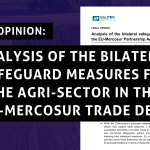THE NEED FOR RESTORATION OF FORESTS INSIDE AND OUTSIDE OF PROTECTED AREAS
Biodiversity loss in European forests is taking place at an alarming scale. To reverse this we must:
- strictly protect (meaning non-intervention in) our remaining old-growth forests,
- set aside additional forests for restoration in order for them to recover into high value biodiversity areas, and
- improve the biodiversity of forests that will still be managed for wood production.
The Nature Restoration Law offers an opportunity to achieve all of the above, particularly the latter two elements by improving ecosystems through integrative restoration practices. This broad view of restoration is moving away from a simplified land-sparing approach, which promotes a trade-off between forest reserves and tree plantations and ignores the role of foresters pursuing environmental objectives. There is scientific recognition that most European forests are managed and degraded; that protected areas
are affected by this management; and that virtually all forests are in need of restoration.
Intensive management, without satisfactory multifunctionality, is undermining all three pillars of sustainability. Employment in the forestry sector has been falling (see graphic on right) and the harvest costs are in some cases exceeding profitability. Despite the extent of tree cover, EU countries have low ecosystem integrity and the carbon absorbed by forests has been declining since 2013. Neither small forest owners nor the environment are thriving. While environmental protection has clear benefits for society, alternative forestry methods such as close-to-nature forest management have benefits for both the environment and the forestry sector, specifically small forest owners.
In order to achieve the climate, environmental, and social objectives underpinning resilient ecosystems and the forest sector, it is necessary to improve the condition of forests through deep restoration activities (Article 4), but also through a shift towards close-to-nature forest management (Article 10), which is currently practised on only around 25 per cent of the area of European forests.



